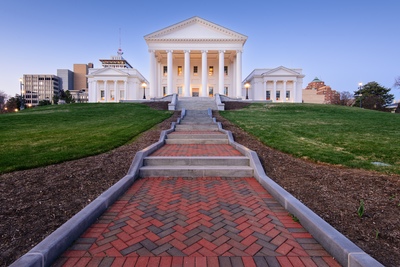
State Government Affairs, Elections & Campaigns
How Lieutenant Governors Are Selected (And Why It Matters)
December 10, 2025 | Bill Kramer
June 13, 2023 | Bill Kramer
 (1)-fed4f3-1200px.jpeg)
Key Takeaways:
During a busy news week, the U.S. Supreme Court’s decision in Allen v. Milligan on Thursday shocked many election law experts who expected the Justices to continue to limit the federal Voting Rights Act (VRA). But instead, in a 5-4 decision, the majority upheld Section 2 of the VRA and affirmed a lower court’s ruling to block Alabama’s congressional map for likely violating Section 2, forcing the state to redraw the map with an additional majority-Black district. While this specific case applied to a congressional map, as we all know, state redistricting includes the drawing of both congressional districts as well as state legislative districts. So while the media focus of the case has been on the potential shifts in congressional control in 2024, Allen could also significantly shuffle state legislative maps before the next elections.
Section 2 of the VRA — which this ruling preserves — prohibits any voting law, practice, or map that results in the denial of the right to vote of any citizen on account of race. For those looking for a thorough legal analysis of the Allen case, I’d point you to the always excellent SCOTUSBlog and Election Law Blog. Suffice it to say, the decision itself did not actually expand voting rights for minorities as much as it preserved the status quo of Section 2 of the VRA. This has led some commentators to downplay the significance of Allen. For example, law professor and redistricting expert Justin Levitt told Bolts in an interview, “The fact that the court didn’t blow up the entire structure, and the fact that that’s cause for celebration, shows you a little bit about how far the window has moved.”
Nonetheless, by rejecting Alabama’s arguments against applying Section 2 of the VRA to the state’s congressional map, the case opens the window to challenging newly drawn state legislative maps under Section 2 as well. According to Democracy Docket’s redistricting lawsuits tracker, eight states — Alabama, Arkansas, Georgia, Louisiana, Michigan, Mississippi, North Dakota, and Washington — have active litigation challenging state legislative maps as violating Section 2 of the VRA. Some of those cases were paused specifically to take into account the outcome of Allen v. Milligan. This decade’s state legislative redistricting cycle just got a lot more interesting.
And despite the naysaying from liberal legal commentators, law professor Richard H. Pildes argues that when taking new technology into account, the Allen decision may actually expand the effective scope of the VRA. Professor Plides explains that “To win a VRA redistricting case, one element plaintiffs must show is that it is possible, where voting is racially polarized, to create a reasonably configured district with a voting-age population that is at least 50 percent Black eligible voters (or Hispanic voters or Asian voters). In earlier decades, plaintiffs had to do their best with the census data and geographic information to see if they could create such a district. . . . But computers can run through tens of thousands of possible maps to see if it’s possible to ferret out such a new VRA district. Indeed, that is precisely what the experts did in the Alabama case.” Pildes concludes that this new technology helps account for the increase in legal challenges under Section 2 against redistricting maps this decade and Allen could open the door to many of those challenges succeeding in court, resulting in new state legislative maps along with new congressional maps in subsequent elections.
For more timely insights like this, be sure to sign up for our Morning MultiState weekly morning tipsheet. We created Morning MultiState with state government affairs professionals in mind — sign up to receive the latest from our experts in your inbox every Tuesday morning. Click here to read past issues and sign up.

December 10, 2025 | Bill Kramer
-238a17-400px.jpg)
December 10, 2025 | Bill Kramer

November 5, 2025 | Bill Kramer